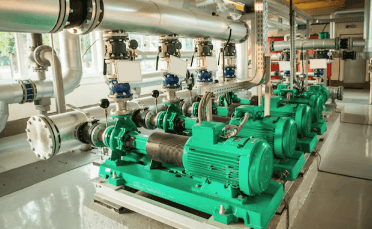Question
a.
Increases with distance
b.
Increases if a higher viscosity fluid is used
c.
Increases if a denser fluid is used
d.
Decreases with increase in free stream velocity
Posted under Heat Transfer
Interact with the Community - Share Your Thoughts
Uncertain About the Answer? Seek Clarification Here.
Understand the Explanation? Include it Here.
Q. The convective heat transfer coefficient in laminar flow over a flat plate
Similar Questions
Explore Relevant Multiple Choice Questions (MCQs)
Q. For laminar flow over a flat plate, the average value of Nusselt number is prescribed by the relation
Nu = 0.664 (Re)^0.5 (Pr)^0.33
Which of the following is then a false statement?
View solution
Q. For turbulent flow over a flat plate, the average value of Nusselt number is prescribed by the relation
Nu = 0.664 (Re)^0.5 (Pr)^0.33
Which of the following is then a false statement?
The average heat transfer coefficient increases as
View solution
Q. A nuclear reactor with its core constructed of parallel vertical plates 2.25 m high and 1.5 m wide has been designed on free convection heating of liquid bismuth. Metallurgical considerations limit the maximum surface temperature of the plate to 975 degree Celsius and the lowest allowable temperature of bismuth is 325 degree Celsius. Estimate the maximum possible heat dissipation from both sides of each plate. The appropriate correlation for the convection coefficient is
Nu = 0.13 (Gr Pr)^1/3
View solution
Q. A thin walled duct of 0.5 m diameter has been laid in an atmosphere of quiescent air at 15 degree Celsius and conveys a particular gas at 205 degree Celsius. Base your calculations on one meter length of the duct, estimate the convective coefficient of heat transfer
View solution
Q. Free correction modulus is given by
View solution
Q. The free convection coefficient is given by
h = C₁ d t m/l^(1 – 3m)
The value of exponent for laminar flow is
View solution
Q. For inclined plates we multiply Grashoff number with
View solution
Q. The free convection coefficient is given by
h = C₁ d t m/l^(1 – 3m)
The value of exponent for turbulent flow is
View solution
Q. Which of the following is true for laminar flow?
View solution
Q. A horizontal heated plate at 200 degree Celsius and facing upwards has been placed in still air at 20 degree Celsius. If the plate measures 1.25 m by 1 m, make calculations for the heat loss by natural convection. The convective film coefficient for free convection is given by the following empirical relation
h = 0.32 (α)^0.25 W/m² K
Where α is the mean film temperature in degrees kelvin
View solution
Q. For laminar flow, Reynolds number must not be less than
View solution
Q. For laminar flow, Prandtl number must be more than
View solution
Q. Air at atmospheric pressure and 20 degree Celsius flows with 6 m/s velocity through main trunck duct of air conditioning system. The duct is rectangular in cross-section and measures 40 cm by 80 cm. Determine heat loss per meter length of duct corresponding to unit temperature difference. The relevant thermos-physical properties of air are
v = 15 * 10¯⁶ m²/s
α = 7.7 * 10¯² m²/hr
k = 0.026 W/m degree
View solution
Q. The local film coefficient for laminar flow past a flat plate may be obtained from the correlation
View solution
Q. For a plate of length l, an average value of Nusselt number is given by
View solution
Q. The correlation for liquid metal is given by
View solution
Q. Which of the following is true for turbulent flow?
View solution
Q. Mc Adam relation is given by
View solution
Q. Investigate the effect of following condition on the average value of heat transfer coefficient in flow through a tube
Two fold increases in flow velocity by varying mass flow rate
It may be presumed that there is no change in the temperature of the liquid and the tube wall, and that the flow through the tube is turbulent in character
View solution
Q. Calculate the rate of heat loss from a human body which may be considered as a vertical cylinder 30 cm in diameter, and 175 cm high while standing in a 30 km/hr wind at 15 degree Celsius. Human has a surface temperature of 35 degree Celsius
View solution
Recommended Subjects
Are you eager to expand your knowledge beyond Heat Transfer? We've handpicked a range of related categories that you might find intriguing.
Click on the categories below to discover a wealth of MCQs and enrich your understanding of various subjects. Happy exploring!








